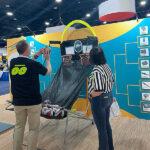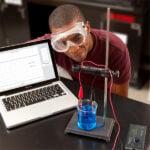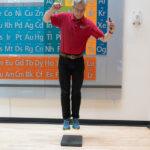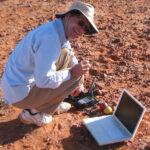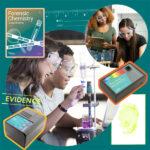
Sharing ideas and inspiration for engagement, inclusion, and excellence in STEM
Vernier offers more than 1,000 experiments in biology, chemistry, engineering/robotics, and physics that can help you inspire students and integrate data-collection technology into your science courses.
All three of this month’s experiments were featured in or inspired by recent Vernier webinars. Our webinars are a great way to see our experienced educational technology specialists demonstrate Vernier experiments, answer your top questions, and provide tips about using our products to engage your students. Visit our website to check out webinar recordings and register for upcoming webinars.
Biology
Students use the Go Direct® SpectroVis® Plus Spectrophotometer or Go Direct Visible Spectrophotometer to conduct this experiment. The objectives of the experiment are to
- Determine and analyze the visible light absorbance spectrum of spinach extract.
- Determine and analyze the fluorescence spectrum of the same spinach extract.
- Develop and investigate a researchable question dealing with visible light spectra and/or fluorescence spectra of plant pigments.
Chemistry
“Confectionary Chemistry: Measuring Sugar Inversion”
Students use the Go Direct Polarimeter and Chemical Polarimeter Accessory Cells to conduct this experiment. The objectives of the experiment are to
- Observe the inversion reaction kinetics of sucrose with varying amounts of the enzyme catalyst, invertase.
- Monitor a reaction and determine reaction rate.
Physics
In this modified Atwood’s machine experiment, students use the Dynamics Cart and Track System, Photogate, Dual-Range Force Sensor, Ultra Pulley, and Pulley Bracket. The objectives of the experiment include
- Identify the forces acting on an object both when its velocity is constant and when it is accelerating.
- Collect force, velocity, and time data for a cart accelerated on a track by a falling mass.
- Use graphical methods to determine the acceleration of the cart.
- Determine the relationship between the cart’s acceleration and the net force applied to it.
- Determine the effect of the mass on the relationship between acceleration and net force.
Share this Article

Sign up for our newsletter
Stay in the loop! Beyond Measure delivers monthly updates on the latest news, ideas, and STEM resources from Vernier.

